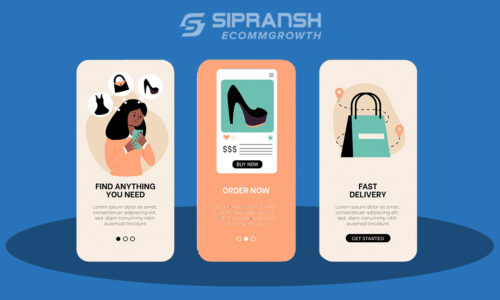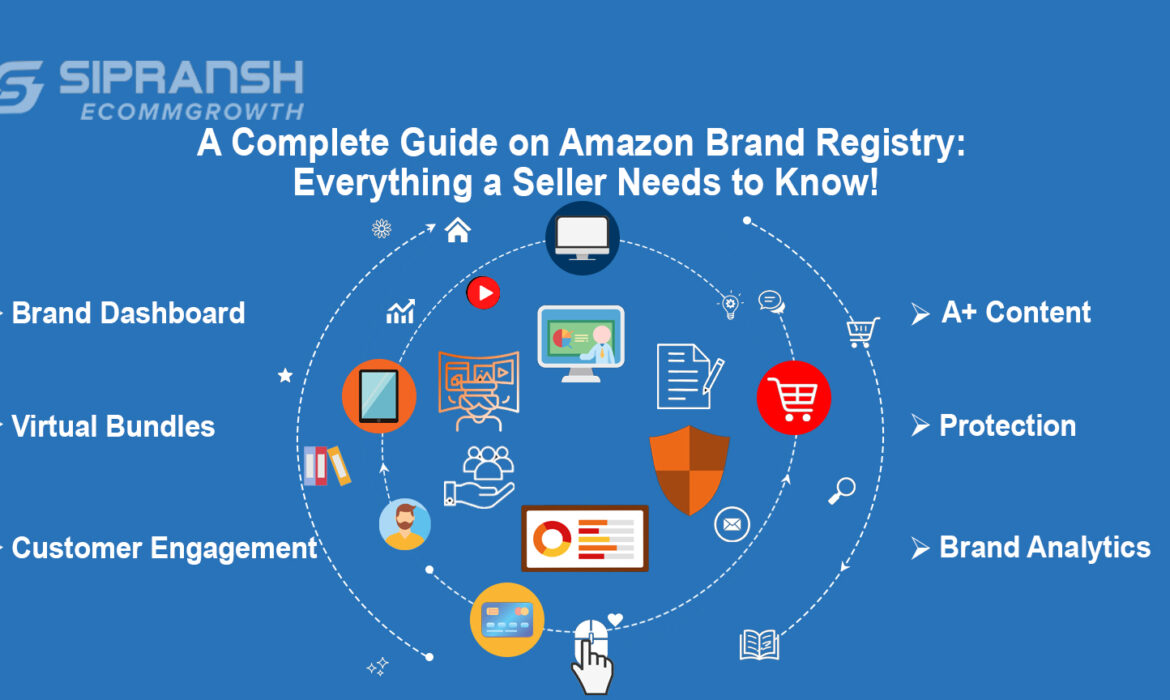
Selling on Amazon is a great way to boost your business and we all know that the world’s giant retail has some fierce competition in business within its marketplaces as well. But with great benefits come immense competition and a dire need to protect your brand and products. Sellers are concerned about rogue sellers selling knockouts of their products at a cheaper cost, worried about the hijackers on their listing, and frustrated because of being unable to make simple changes in the product detail page. The best way to defend products and your brand from such situations is with Amazon Brand Registry as it eases the struggles against trademark infringement.
In this post, we’ll provide a detailed overview of the brand registry, its benefits, how to enroll, and why brands should consider enrolling in the Brand Registry.
What is Amazon Brand Registry?
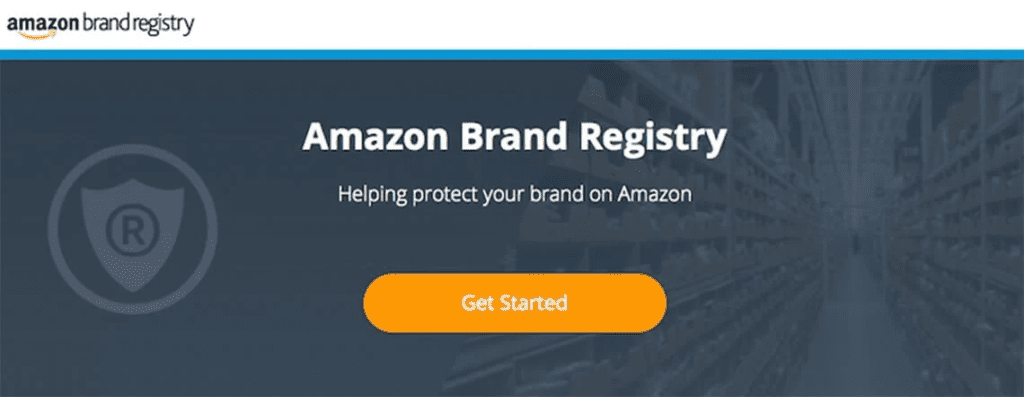
Amazon Brand Registry is for trademarked manufacturers & brands selling on Amazon through Amazon Seller Central to provide access to powerful tools and special advantages and control over non-brand registered sellers. This Amazon program benefits manufacturers by giving direct influence on their detail pages.
To quote Amazon, “The Amazon Brand Registry is available to sellers who manufacture or sell their own branded products. Manufacturers can enroll their brand in the Amazon Brand Registry and register themselves as the brand owner. The goal of Amazon Brand Registry is to make it easier for sellers to manage their own brands and list their products on Amazon.”
When Was Amazon Brand Registry Launched?
The concept of the Amazon Registry has been available for many years in different forms. In May 2017, the scheme got updated by Amazon to help sellers protect their products from other retailers by giving them access to additional tools for optimization.
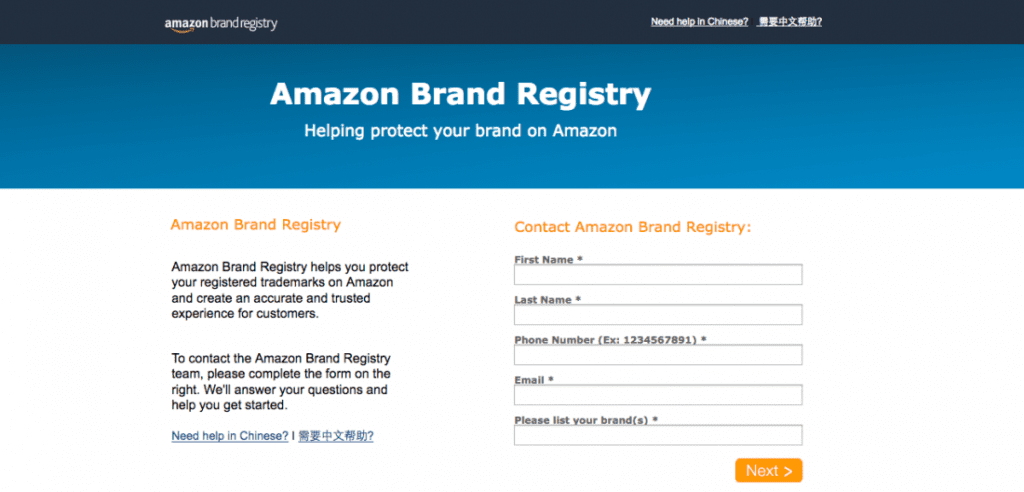
Although the initial scheme also had the same idea, the platform struggled more with increasing imitation products. Then Amazon announced its new initiative in March 2017, which will help eliminate all the fake products sold on its website. Hence, the program launched as Amazon Brand Registry 2.0.
As per the existing Amazon policy, any brand (small or big) with trademark privileges can enroll in its Brand Registry Program.
Why Did Amazon Introduce Brand Registry?
Amazon allows multiple sellers to use the same listing to improve customer experience and allow quick searching of products. Fake sellers would take advantage of this and “hijack” the listing by selling a cheaper version at a lower price. Shoppers would buy the product thinking that it’s legitimate and when they receive a non-genuine product, they’d leave a negative review. Because the listing with the lowest price gets the Buy Box, the fake sellers would get their share from the sales while brands were left with nothing but a ruined reputation. This not only took a toll on the brand’s reputation but also negatively impacted the trusted status of Amazon.
The worst part was that sellers were supposed to provide proof in reporting infringement. And if they were successful in proving the infringement or the hijacking issue, the counterfeit sellers would easily open a new account and start again.
By introducing a brand registry, Amazon made an effort to show that its platform is as convenient and trustworthy as possible. And brand registry has, to an extent, helped prevent brand erosion and curb rogue sellers.
Who Can Enroll in the Brand Registry?
A Brand Registry is for a brand in Amazon Seller Central that has an active registered trademark. However, if a seller is authorized, then the brand owner can also be granted a Brand Registry.
Below are the sellers who can enroll in Brand Registry:
- Manufacturers/Private label brand owners
- Distributors with licensed trademarks
- Resellers and people with written approval from a brand owner or manufacturer to manage a product’s detail page on Amazon
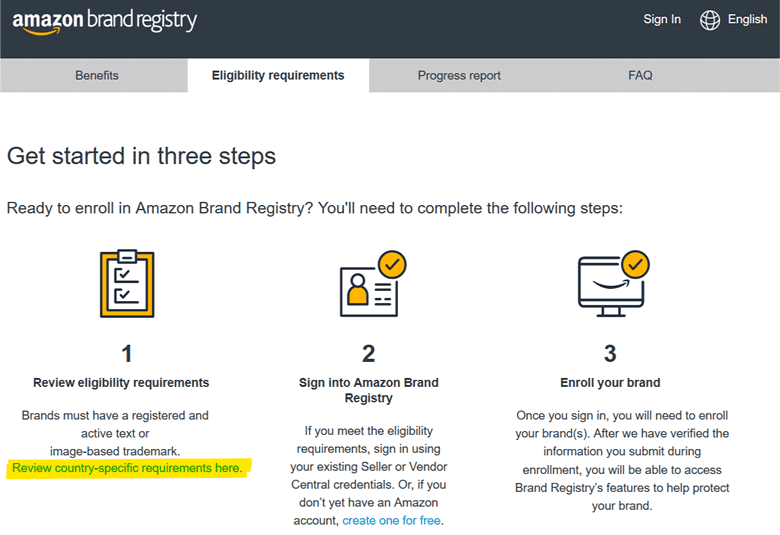
Eligibility Requirements Of Amazon Brand Registry
The eligibility requirements differ from one country to the other. Here is the list:
| Country Name | Eligibility Requirements |
| United States | Trademark organization- USPTO (United States Patent and Trademark Office). |
| Text-based marks are 1 – Letter(s)/Word(s)/Number(s) and 4 – Standard Character Marks. | |
| The trademark should have an active registration in the main register. | |
| The image-based trademark should include a drawing that can have a letter(s)/word(s)/number(s) in any stylized form. | |
| Canada | The trademark organization is CIPO (Canadian Intellectual Property Office). |
| The trademark should be registered. | |
| The text-based mark should be a word. | |
| The image-based mark should be a design. | |
| Mexico | The trademark organization in Mexico is IMPI (Marcas Instituto Mexicano de Propiedad Industrial). |
| The trademark should be registered. | |
| The text-based mark has to be nominative. | |
| The image-based mark has to be mixed – design and text (innominate o Diseno + nominative). | |
| Brazil | The trademark organization in Brazil is INPI (Instituto Nacional da Propriedade Industrial). |
| The trademark should be registered. | |
| The text-based mark has to be nominative. | |
| The image-based mark should be Mista Contendo Elementos Nominativos. | |
| United Kingdom | The trademark organization in the UK is UK IPO (United Kingdom Intellectual Property Office) and EUIPO (European Union Intellectual Property Office). |
| The trademark should be registered. | |
| The text-based mark should be a word. | |
| The image-based mark should be a figure (for UKIPO) and a figure-with-word (for EUIPO) | |
| Germany | The trademark organization in Germany is EUIPO (European Union Intellectual Property Office) and DPMA (Deutsches Patent und Markenamt). |
| The trademark should be registered. | |
| The text-based mark should be a wordmark. | |
| The image-based mark should be Bildmarke mit Wortelementen (for EUIPO) and Wort-Bildmarke (for DPMA). | |
| Spain | The trademark organization in Spain is EUIPO (European Union Intellectual Property Office) and OEPM (Oficina Espanola de Patentes y Marcas). |
| The trademark should be registered. | |
| The text-based mark should be a Marca denominative (for EUIPO). | |
| The image-based mark should be Marca figurativa (EUIPO) and Marca figurativa que contiene elementos denominativo (for EUIPO) and Mixta – Denominativo con gráfico (for OEPM). | |
| Italy | The trademark organization in Italy is EUIPO (European Union Intellectual Property Office) and UIBM (Ufficio Italiano Brevetti e Marchi). |
| The trademark should be registered. | |
| The text-based mark should be Marchi denominativi ( for EUIPO) and Marchio verbali (for UIBM). | |
| The image-based mark should be Marchi figurativi contenenti elementi denominativi (for EUIPO), Marchio figurativi (for UIBM), and Marchio figurativi a colori (for UIBM). | |
| France | The trademark organization in France is EUIPO (European Union Intellectual Property Office) and INPI (Institut national de la propriété industrielle). |
| The trademark has to be registered. | |
| The text-based mark should be Marque verbale (for EUIPO). | |
| The image-based mark should be Marque figurative comportant des éléments verbaux (for EUIPO) and Marque figurative (for EUIPO). | |
| India | The trademark organization is the Controller General of Patents Designs and Trademarks. |
| The trademark has to be registered. | |
| The text-based mark should be a word. | |
| The image-based mark has to be a device or combined. | |
| Australia | The trademark organization is IP Australia. |
| The trademark has to be registered. | |
| The text-based mark should be a word (can be either fancy or plain). | |
| The image-based mark should be combined. |
Step-By-Step Procedure To Apply For The Amazon Brand Registry Program
To get started, you need to have an account on Amazon Seller Central. Once you have done that, go to their official Brand Registry Portal and follow the steps mentioned below:
Step 1: Create A Brand Registry Account
One has to do the following to sign up and verify for a Brand Registry account:
- Give the legal/corporate information
- Validate the identity via text/SMS
- Accept the terms, policies, and conditions
- Finally, click on the “save“ button
Step 2: Enroll The Brand
Once the account verification is complete, the next step is to enroll the brand. It includes four crucial criteria:
- Brand Eligibility: This page concerns the brand name to be registered, the brand logo and the number of brand names enrolled in the registry. Once you fill in all the above details, click on the “next” button.
- Intellectual Property: This page involves the brand selecting its trademark type, trademark name, registration number, and registration office. Once you fill in these details, click on the “next” button.
- Identification: This page involves uploading the product images, brand logo, packaging image, and online presence information (website and social media page). Once you fill in these details, click on the “next” button.
- Characteristics: This page describes more about the brand – seller account information, vendor account details, whether the products have GTINs, EANs, UPCs, or EANs, manufacturing details, license details, a manufacturing country, and the product distributed countries. Once you fill in these details, click the “apply” button.
Step 3: Verification From Amazon
Once the application is submitted successfully, then Amazon validates all the information. It takes about 2 to 10 days for the process to finish and have the brand registry activated. At this step, Amazon sends a code to the registered trademark office.
The seller has to reach that registered contact and make them aware they will receive an email from Amazon, which needs to be forwarded back to the seller.
Once the sellers receive this code, they should log in to the Amazon Seller Central account, fill in the respective Case ID from the initial email, and hit the Go button. Select the Respond or View button, and choose Reply. Paste the code and press send. Once you complete the above steps and enter the code successfully, the process of Brand Registry will complete within 1–2 working days.
How do you get a Trademark for Amazon’s Brand Registry?
Apply for the Brand Registry program and get a registered trademark for your product. In the United States, you can register your trademark with the United States Patent and Trademark Office (USPTO).
Follow the below steps to get a Trademark for a Brand:
- Ensure you have a unique name and logo with no other registered trademarks exist of the same name. Check a thorough search on the USPTO website using their official database and check the former.
- Select a specific class for your trademark. This class will define what type will be under your trademarked brand. The cost of the trademark depends on the type you selected.
- File your trademark application with a licensed trademark attorney. You can apply and file for a trademark without hiring an attorney — it will save you a few bucks.
- You can expect to wait at least a year before you get an answer from the USPTO. But you don’t have to wait a year to get your brand approved by Amazon. Amazon offers a service called the IP Accelerator, which connects Amazon business owners to curated Intellectual Property (IP) attorneys who will help them with the trademark process.
- If you’re working with an IP specialist handpicked by Amazon, it will approve your product for the Brand Registry before your trademark application is even accepted.
- If you already have a trademark or submitted a request through the IP Accelerator program, the approval process should take about two weeks. Provide everything Amazon needs for your brand the first time around.
- Make sure you review all of the eligibility requirements, and please note that your brand must have an active registered trademark in each country where you would like to enroll.
Features & Benefits Of The Amazon Registry Program
Once a seller is enrolled in Brand Registry, they can go to the Brands tab on Seller Central’s main navigation bar and access different Features such as
- Brand Analytics
- Manage Experiments
- Brand Dashboard
- Customer Reviews
- Customer Engagement
- Virtual Bundles
- Brand Referral Bonus
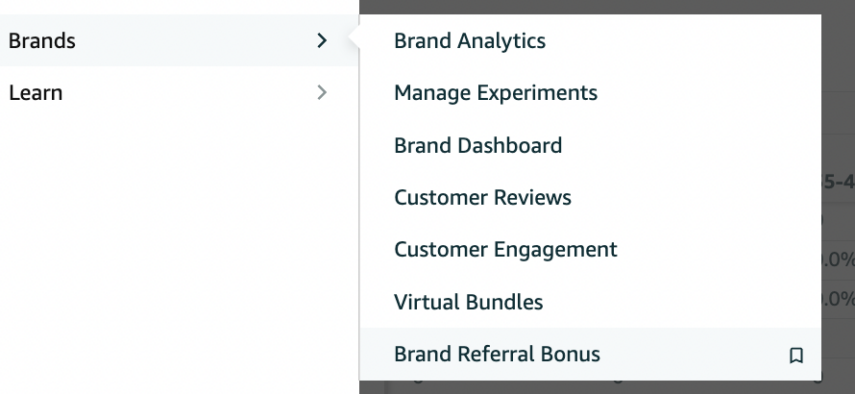
Check your Brands Health and Brand Benefits in the Brand Dashboard.
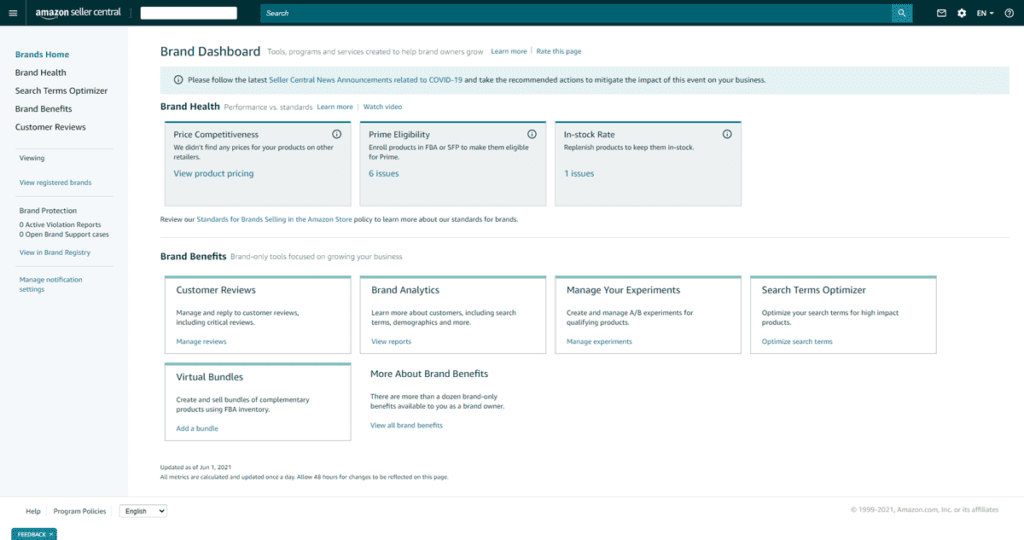
Benefits of Amazon Brand Registry
1. Brand Protection
This giant retailer has massive competition with a tremendous seller base. Thousands of sellers go the extra mile to stay ahead. The most common fear sellers have while selling a product under their brand is what if any random merchant hijacks their product.
You’ve invested your time to apply and pay for a registered trademark. Thus, the last thing you want is for someone to mess with your brand. Thankfully, the brand registry can help you with that. It is your most suitable gamble for defending your products. Amazon Brand Registry allows the brand to be registered and gives sole ownership to the Amazon Buy Box. Therefore, if someone tries to hijack your product, the authorized seller can contact Amazon seller support to have it eliminated.
You can protect your intellectual property and content on Amazon with a reliable internal team to help you with the following:
- Any marketplace violations- product review manipulations and not as described complaints from customers will get reported.
- Any issues with your listing- incorrect product details, product variation information, and blocked listings will get reported.
- IP infringement claims will get rejected or submitted.
- Any technical issues with page loading for your product listing or your Seller Central homepage operations will get reported.
- Increase previously submitted claims.
You can monitor all your ongoing cases related to any of the above and can escalate when required.
Get more protection with transparency –
Transparency is an Amazon program that offers additional security for your brand (and customers) from forgers.
These are the steps applied when using Amazon transparency:
- Enroll your products in the program Transparency.
- Apply Transparency codes to your products.
- Amazon checks your products to ensure only genuine units and ships those units to customers.
- Customers can use transparency codes to verify the authenticity of products no matter where they are.
2. Access A+ content
One of the best features of Amazon’s Brand Registry is its “A+ Content Manager” (formerly known as Enhanced Brand Content). You can access the A+ Content Manager by going to a tab called ‘Advertising navigation’ in Seller Central.
Enhancing your brand content allows you to add additional text, images, infographics, and unique modules to your product listings, over and above the standard plain-text product description.
Ultimately, it gives your listing a professional look.
Check our blog on A+ content and get complete knowledge about it.
3. Engage customers with your brand
Being brand-registered also means acquiring access to features that will set you apart from the rest. Amazon Storefront is like your own mini-website within the Amazon platform. A stronger brand identity gives you more visibility which further helps you dominate your niche in a competitive market. Create an Amazon storefront and get your URL address, which will take your customers from Amazon’s main page to your specific Amazon website, where the customers can browse and shop only for your brand products without being distracted by the competition.
Amazon makes creating content like storefronts easy. Check out our whole article on the Amazon storefront and learn what every seller should know about it.
4. Sponsored Brand Ads
Sponsored Brands are the headline ads that appear at the top of the page in your Amazon search results. It is another way to engage with customers. You can use these ads and drive the discovery of your brand, using custom messaging to help buyers see your brand the way you want. When shoppers click on your brand name or logo, they go to your storefront immediately. If they click on your product, they go directly to your product page.
Like regular ads, you pay per each click that Amazon shoppers make on your ads.
5. Amazon Live Creator
If you want to engage with your customers directly, you can interactively add live stream video to your brand strategy using Amazon Live.
This feature of Amazon’s Brand Registry allows sellers to share their brand story. It helps them reach more shoppers.
You can use the Livestream video to demonstrate how your product works, or you can use it to live chat with potential customers to answer any questions.
Learn what is Amazon live, how you can utilize it, and its benefits in our blog- Why Every Brand Needs Amazon Live?
6. Add Videos to the Product listing
There is a saying that if a picture is worth 1000 words, a video is worth 100000 words. They are an excellent way to showcase your product features in an easy-to-comprehend and fun-to-watch manner. Besides, if your product is innovative or complex, video informs shoppers how to use the product.
7. Subscribe & Save Program
Sell replenishable items such as toilet paper, kitchen towels, or shampoo while enlisting in the Subscribe & Save program. Amazon buyers are too busy and don’t have time to refill their supplies now and then. This program offers the amenity of automatic replenishment at a discount price. On the other hand, sellers get repeat sales and growing customer trust.
8. Get Access to Powerful Analytics
Five essential reports in Amazon Brand Analytics will significantly benefit you.
1) Amazon Search Terms
The Amazon Search Terms report allows you to “Discover what products are winning the most clicks and conversions on strategic search terms. Evaluate the impact of your marketing campaigns by monitoring trends.
You can enter a Search Term or put an ASIN to see:
Search Frequency Rank
The top clicked ASIN
#1 – #3 Product Title
#1 – #3 Click Share
#1 – #3 Conversion Share
It allows you to quickly and easily understand what keywords and products are flourishing in the market.
2) Repeat Purchase Behaviour
Amazon says that the Repeat Purchase Behavior report helps you: “Better strategize and evaluate your marketing campaigns to drive repeat purchases and attain new customers.”
You can quickly and easily learn which consumers are creating repeat purchases for your product.
3) Market Basket Analysis
The Market Basket Analysis report allows you to “Identify cross-selling and bundling prospects by acquiring insight on products that are being bought together by your shoppers.”
You can learn which products are showing up in the identical product searches; the customers are purchasing that product together with your product.
4) Item Comparison & Alternate Purchase Behaviour
Amazon says that the Item Comparison and Alternate Purchase Behavior report will improve your competitive intelligence by gaining insight into products most frequently viewed together with your product in addition to shoppers’ final choice after viewing your product.
Immediately understand who your direct and indirect competitors are so you can compare your product listings to theirs to improve your content, keyword strategy, and more to drive sales.
5) Demographics
Amazon says that the Demographics report will help brands selling on Amazon to connect with their target audience more effectively or identify customization opportunities with customer demographics insights.
Identify if your buyers on Amazon align with the Buyer Persona you created before launching your product. If it doesn’t match, this will help you tailor your images, video, copy, and keywords to better align with the consumers who are buying your products.
You will get access to
- Age
- Household Income
- Education
- Gender
- Marital Status
Gain Complete Control On The Product Listings
After the brand registry, a seller has complete control over the following:
- Title of the product
- Description of the product
- Image of the product
- Use of product ID instead of UPCs & EANs
- Lessen the “match“ errors at the time of listing
Broad Access to who can sell the brand products
Because of the brand registry option, a brand can decide who can sell its products. Five types of sellers qualify:
- Sellers who sell their products under the brand name
- Sellers who are manufacturers
- Sellers who are private-label brand owners
- Sellers who produce white-label products
- Sellers who are distributors and who have the authority to own a trademark’s content on Amazon
Note: If a seller sells in any two of the categories given below, then the seller is not qualified for the above criteria:
- Sports/entertainment collectibles (both used and new products)
- Video, BMVD, DVD, Media, and Books
Some other Features Amazon Brand Registry offers:
- Amazon Vine Program: It invites the most trusted shoppers on Amazon to leave reviews of products and therefore attract new buyers by presenting genuine and unbiased feedback.
- Virtual Bundles Tool: Virtual Bundle tool allows brand owners to create unique “bundles” out of several complementary products purchased from a single detail page.
- Amazon Attribution tool: This tool provides analytics understanding into social media, display ads, PPC, and email marketing data.
Benefits of Amazon Brand Registry:
- Increases control over product detail pages (such as titles, product descriptions, and images)
- Provides the ability to list products with different product identifications outside of UPC and EAN codes
- Provides advanced seller support
- Gives access to predictive automation based on machine learning algorithms
- Significantly increases your sales conversions.
- Avails you to get Amazon reviews.
- Helps your products show up on the first page of Amazon product searches (Amazon SEO)
- Protects your brand from knock-offs.
- Provides access to powerful analytics to help you drive sales.
- Give a brand complete control over their product listings
- Ensures that the information given about a product is accurate
- Creates different product variations
- Eliminates bad listings
- Free of Cost
- Offers guided instructions to report a potential infringement
- Allows you to search ASIN in bulk and faster report about any infringement
- Offers enhanced image search to match any fake logo(s) or product(s) through images
- Makes sure that the customer reads the correct information about a brand’s product
Brand Registry FAQs:
Q1: Can a private label seller get their brand registered?
Yes, they can. They need to have the documents stated above.
Q2: Can someone enroll on my behalf?
Yes absolutely. You can grant access to your Brand Registry to access your Amazon seller consultants and let them handle the rest. That’s the most hassle-free way to acquire a brand registry.
Q3: What time Amazon takes for the Brand Registry process to complete?
It depends on Amazon. It may take longer if they are busy.
Q4: What is the cost of a Brand Registry?
It’s free to apply to all sellers.
Q5: Do I need to apply individually for each marketplace?
Yes definitely. Each country has its registry, so you need to apply separately.
Q6: Can someone change my product listing after I have the brand registry?
No, they cannot. Brand Registry gives you total control of your listing content, images, and other elements.
Q7: How can a seller find out if a product is enrolled?
The information isn’t available. The easiest way is to try creating an A+ Content, and if the ASIN is eligible, it’s registered.
Final Thoughts
Are you facing trouble while registering your Brand on Amazon? SIPRANSHECOMMGROWTH has a team of experts who will help you with your Brand registration as well as other eCommerce services such as Amazon Account Management, Amazon Storefront, Infographics, A+ Content/ EBC, Listing Optimization, Product Research, Amazon Posts, Product Videos, Brand Story Design, etc. Consult us today, and let us solve all your troubles in no time!



